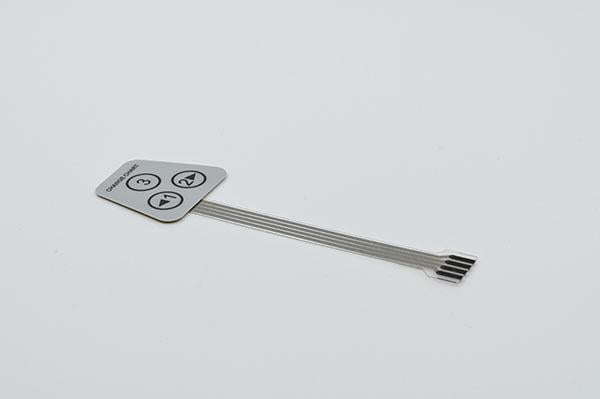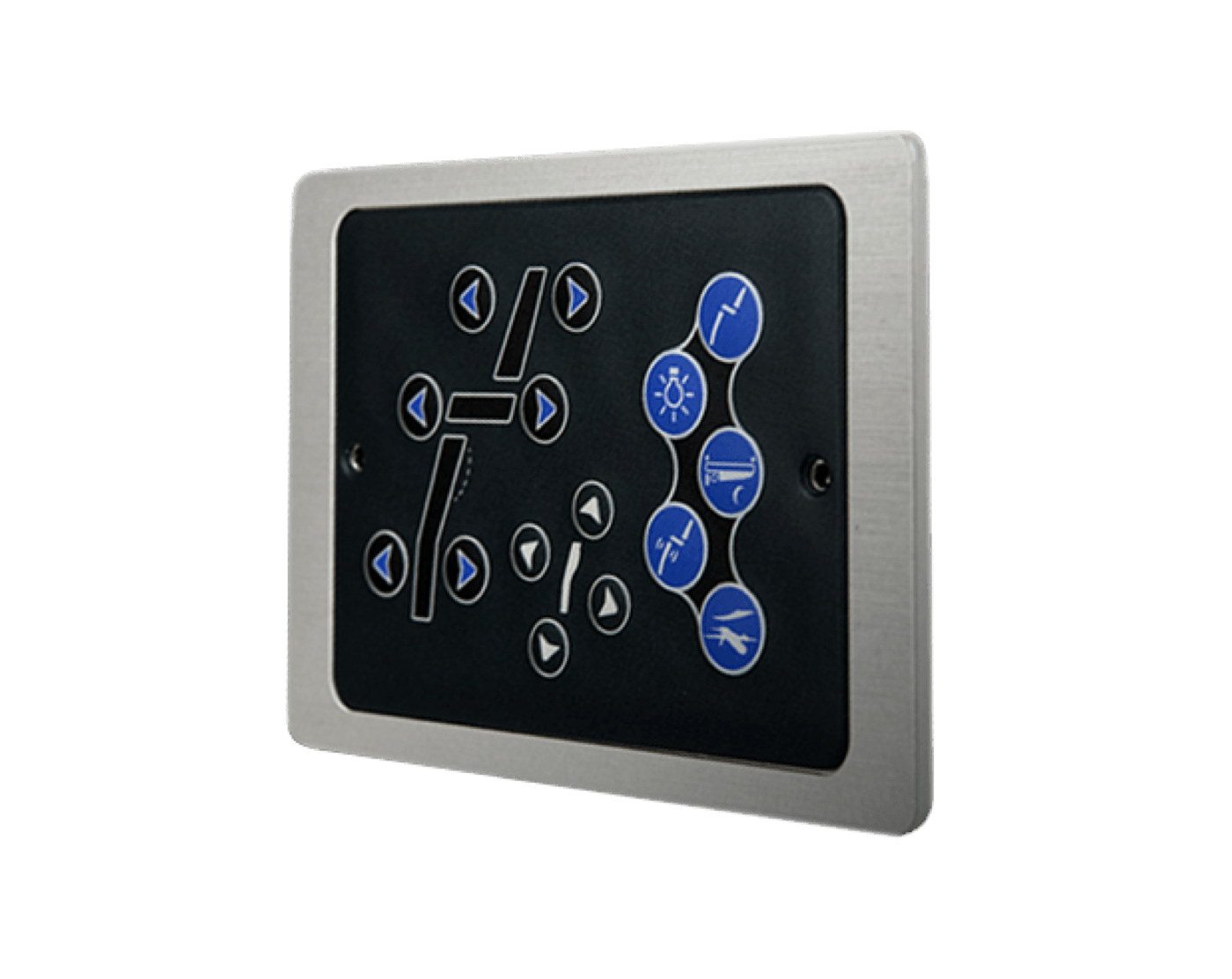A well-known membrane switch manufacturer provides both prototyping and bulk options.
A well-known membrane switch manufacturer provides both prototyping and bulk options.
Blog Article
Everything About Membrane Change: Understanding Its Layout and Functionality
When you assume concerning the control user interfaces in modern tools, membrane layer switches commonly come to mind. Let's explore what sets membrane layer switches over apart from other control systems.
What Are Membrane Buttons?

Their smooth nature makes them simple to tidy and resistant to dirt and dampness, an essential feature in many atmospheres. Membrane layer buttons can additionally be tailored relating to form, size, and graphics, permitting manufacturers to produce one-of-a-kind interfaces customized to details items. And also, they're light-weight and thin, which aids in lessening the overall bulk of devices. Overall, membrane layer buttons play a significant function in enhancing user experience throughout a broad array of applications.
Exactly How Membrane Switches Job
When you press a secret on a membrane layer switch, it triggers a simple yet effective device. The top layer, often made from adaptable product, pushes down onto a conductive layer beneath it. This action bridges the gap between conductive traces, finishing an electrical circuit. As quickly as the circuit closes, it sends a signal to the device's controller, which interprets your input.
You'll discover that the responsive responses differs based on the button design, providing either a soft click or an extra obvious action. When you launch the secret, the membrane layer go back to its original position, resuming the circuit and stopping the signal. This procedure takes place practically instantly, guaranteeing a responsive individual experience.
Membrane buttons are preferred as a result of their toughness and resistance to dust and moisture, making them optimal for numerous applications, from family appliances to medical devices. Comprehending this operation helps you appreciate their prevalent usage.
Key Parts of Membrane Layer Switches
Comprehending the essential parts of membrane layer buttons is essential for understanding their performance and design. At the core, you'll locate the graphic overlay, which supplies the visual interface for individuals. Underneath that, there's a spacer layer that separates the circuit layers, ensuring that they do not make contact up until pushed. The circuit layer is where the magic happens; it contains conductive traces that complete the circuit when you press the switch. Another crucial aspect is the adhesive backing, permitting the switch to adhere to surfaces safely. The protective layer shields against environmental aspects and use, expanding the switch's life-span. Each component plays a considerable role in making sure reputable performance and customer interaction. By understanding these components, you'll get insight into exactly how membrane layer switches over run and their relevance in different applications.
Products Made Use Of in Membrane Change Design
The performance and resilience of membrane changes greatly rely on the materials used in their style. You commonly run into polyester and polycarbonate as key substrates as a result of their superb strength and versatility. These products resist scrapes and chemicals, making them perfect for demanding atmospheres.
The conductive layers usually make use of silver or carbon, selected for their reliability and conductivity. membrane switch manufacturer. Silver offers remarkable performance, while carbon is an economical choice. For the overlay, you could consider a matte or shiny finish, depending upon your aesthetic demands and user experience
Make certain to choose adhesives that endure environmental elements like temperature and moisture. Picking Web Site the ideal products will certainly ensure your membrane switch stands the test of time.
Design Factors To Consider for Membrane Layer Buttons
While making membrane layer switches, it's important to take into account numerous variables that influence their functionality and customer experience. Begin by focusing on the format and switch dimension; ensure they're instinctive and very easy to navigate. Think about the responsive comments you intend to offer-- will individuals need a visible click or a softer touch? Additionally, think of the materials you'll make use of, as they'll impact toughness and aesthetic appeals.
Verify your design accommodates environmental aspects, like moisture or temperature level variations, which could influence performance. By very carefully thinking about these aspects, you'll produce a membrane switch that improves use and complete satisfaction.
Applications of Membrane Switches
Membrane buttons are functional components found in different applications, from industrial equipment to customer electronic devices. You'll see their effect in machines that call for durable interfaces and in tools that profit from smooth styles. Understanding these applications aids you appreciate the functionality and practicality of membrane buttons in daily technology.
Industrial Devices Use
When you're looking to enhance the performance of commercial tools, membrane switches supply a trusted solution that integrates longevity with user-friendly layout. These buttons are perfect for extreme atmospheres, offering resistance to dirt, dampness, and chemicals. Embrace membrane buttons to enhance your procedures and enhance overall efficiency.
Customer Electronics Integration
In the domain of consumer electronic devices, membrane layer buttons play a crucial function in boosting individual interaction and tool capability. Membrane layer switches additionally ensure sturdiness and resistance to dust and wetness, prolonging the lifespan of your electronic devices. By picking membrane layer switches, have a peek here you improve not just the capability however also the design of your devices, making everyday interactions smooth and pleasurable.
Benefits and Disadvantages of Membrane Layer Switches
While membrane buttons provide a variety of benefits, they additionally include some drawbacks that you need to think about. One significant advantage is their portable layout, making them excellent for space-constrained applications. They're likewise cost-efficient, supplying a resilient option with a reduced manufacturing price. In enhancement, their smooth surface area is easy to tidy, improving hygiene in environments like hospitals.

Nevertheless, there are negative aspects. Membrane layer switches can have a much shorter life expectancy compared to mechanical switches, specifically under hefty usage. They can likewise be less responsive, which could impact individual feedback during operation. Moreover, if damaged, repairing them can be challenging and frequently needs full replacement. Eventually, their sensitivity to severe temperatures and environmental problems may limit their performance in particular settings. Stabilizing these advantages and disadvantages will certainly assist you figure out if membrane layer buttons are the ideal fit for your project.
Regularly Asked Concerns
Exactly How Lengthy Do Membrane Layer Changes Usually Last?
Membrane layer switches over usually last between 5 to ten years, relying on usage and ecological conditions. You'll want to review aspects like wear, exposure to moisture, and temperature level changes to gauge their longevity properly.
Can Membrane Switches Be Personalized for Certain Designs?
Yes, you can customize membrane buttons to fit details styles (membrane switch manufacturer). You'll have the freedom to pick colors, forms, and designs that match your task's demands, guaranteeing they mix perfectly with your total aesthetic
What Is the Cost Range for Membrane Switch Manufacturing?
The expense variety for membrane layer button manufacturing usually drops between $1 and $10 per system, depending on aspects like design complexity, quantity, and products. You can obtain quotes from producers to find the very best alternative.

Are Membrane Changes Waterproof or Resistant?
Membrane buttons can be designed to be water resistant or immune, depending upon materials utilized and building techniques. If you need them for damp settings, assure you specify those you can find out more needs throughout the style process.
Exactly How Do Membrane Layer Switches Compare to Standard Switches?
Membrane layer buttons are generally thinner and more flexible than conventional buttons, offering a streamlined style. They're frequently easier to cleanse and integrate, yet could not supply the responsive comments you're made use of to with mechanical options.
Conclusion

Report this page